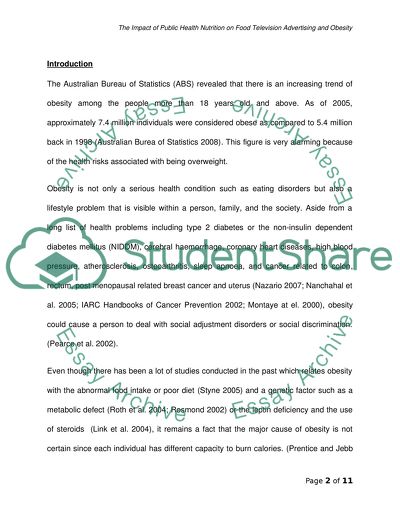Cite this document
(“The Impact of Public Health Nutrition on Food Television Advertising Essay”, n.d.)
The Impact of Public Health Nutrition on Food Television Advertising Essay. Retrieved from https://studentshare.org/health-sciences-medicine/1557539-the-impact-of-public-health-nutrition-on-food-television-advertising-and-obesity
The Impact of Public Health Nutrition on Food Television Advertising Essay. Retrieved from https://studentshare.org/health-sciences-medicine/1557539-the-impact-of-public-health-nutrition-on-food-television-advertising-and-obesity
(The Impact of Public Health Nutrition on Food Television Advertising Essay)
The Impact of Public Health Nutrition on Food Television Advertising Essay. https://studentshare.org/health-sciences-medicine/1557539-the-impact-of-public-health-nutrition-on-food-television-advertising-and-obesity.
The Impact of Public Health Nutrition on Food Television Advertising Essay. https://studentshare.org/health-sciences-medicine/1557539-the-impact-of-public-health-nutrition-on-food-television-advertising-and-obesity.
“The Impact of Public Health Nutrition on Food Television Advertising Essay”, n.d. https://studentshare.org/health-sciences-medicine/1557539-the-impact-of-public-health-nutrition-on-food-television-advertising-and-obesity.


